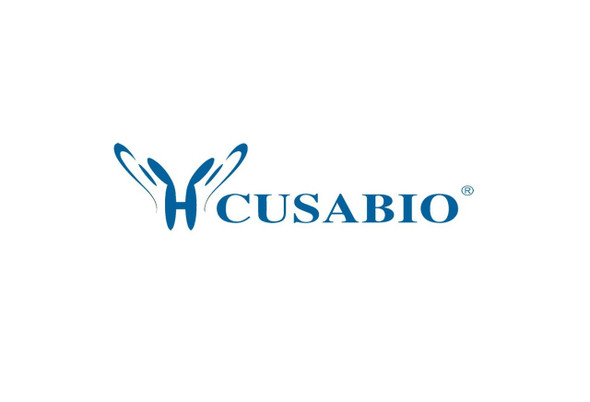Cusabio Human Recombinants
Recombinant Human Inactive tyrosine-protein kinase transmembrane receptor ROR1 (ROR1), partial | CSB-EP020067HU
- SKU:
- CSB-EP020067HU
- Availability:
- 3 - 7 Working Days
Description
Recombinant Human Inactive tyrosine-protein kinase transmembrane receptor ROR1 (ROR1), partial | CSB-EP020067HU | Cusabio
Alternative Name(s): Neurotrophic tyrosine kinase, receptor-related 1
Gene Names: ROR1
Research Areas: Neuroscience
Organism: Homo sapiens (Human)
AA Sequence: QETELSVSAELVPTSSWNISSELNKDSYLTLDEPMNNITTSLGQTAELHCKVSGNPPPTIRWFKNDAPVVQEPRRLSFRSTIYGSRLRIRNLDTTDTGYFQCVATNGKEVVSSTGVLFVKFGPPPTASPGYSDEYEEDGFCQPYRGIACARFIGNRTVYMESLHMQGEIENQITAAFTMIGTSSHLSDKCSQFAIPSLCHYAFPYCDETSSVPKPRDLCRDECEILENVLCQTEYIFARSNPMILMRLKLPNCEDLPQPESPEAANCIRIGIPMADPINKNHKCYNSTGVDYRGTVSVTKSGRQCQPWNSQYPHTHTFTALRFPELNGGHSYCRNPGNQKEAPWCFTLDENFKSDLCDIPAC
Source: E.coli
Tag Info: N-terminal 6xHis-tagged
Expression Region: 30-391aa
Sequence Info: Partial
MW: 44.6 kDa
Purity: Greater than 90% as determined by SDS-PAGE.
Relevance: Tyrosine-protein kinase receptor whose role is not yet clear.
Reference: Patterns of somatic mutation in human cancer genomes.Greenman C., Stephens P., Smith R., Dalgliesh G.L., Hunter C., Bignell G., Davies H., Teague J., Butler A., Stevens C., Edkins S., O'Meara S., Vastrik I., Schmidt E.E., Avis T., Barthorpe S., Bhamra G., Buck G. , Choudhury B., Clements J., Cole J., Dicks E., Forbes S., Gray K., Halliday K., Harrison R., Hills K., Hinton J., Jenkinson A., Jones D., Menzies A., Mironenko T., Perry J., Raine K., Richardson D., Shepherd R., Small A., Tofts C., Varian J., Webb T., West S., Widaa S., Yates A., Cahill D.P., Louis D.N., Goldstraw P., Nicholson A.G., Brasseur F., Looijenga L., Weber B.L., Chiew Y.-E., DeFazio A., Greaves M.F., Green A.R., Campbell P., Birney E., Easton D.F., Chenevix-Trench G., Tan M.-H., Khoo S.K., Teh B.T., Yuen S.T., Leung S.Y., Wooster R., Futreal P.A., Stratton M.R.Nature 446:153-158(2007)
Storage: The shelf life is related to many factors, storage state, buffer ingredients, storage temperature and the stability of the protein itself. Generally, the shelf life of liquid form is 6 months at -20?/-80?. The shelf life of lyophilized form is 12 months at -20?/-80?.
Notes: Repeated freezing and thawing is not recommended. Store working aliquots at 4? for up to one week.
Function: Has very low kinase activity in vitro and is unlikely to function as a tyrosine kinase in vivo
Involvement in disease: Deafness, autosomal recessive, 108 (DFNB108)
Subcellular Location: Membrane, Single-pass type I membrane protein, Cell projection, axon
Protein Families: Protein kinase superfamily, Tyr protein kinase family, ROR subfamily
Tissue Specificity: Expressed strongly in human heart, lung and kidney, but weakly in the CNS. Isoform Short is strongly expressed in fetal and adult CNS and in a variety of human cancers, including those originating from CNS or PNS neuroectoderm.
Paythway:
Form: Liquid or Lyophilized powder
Buffer: If the delivery form is liquid, the default storage buffer is Tris/PBS-based buffer, 5%-50% glycerol. If the delivery form is lyophilized powder, the buffer before lyophilization is Tris/PBS-based buffer, 6% Trehalose, pH 8.0.
Reconstitution: We recommend that this vial be briefly centrifuged prior to opening to bring the contents to the bottom. Please reconstitute protein in deionized sterile water to a concentration of 0.1-1.0 mg/mL.We recommend to add 5-50% of glycerol (final concentration) and aliquot for long-term storage at -20?/-80?. Our default final concentration of glycerol is 50%. Customers could use it as reference.
Uniprot ID: Q01973
HGNC Database Link: HGNC
UniGene Database Link: UniGene
KEGG Database Link: KEGG
STRING Database Link: STRING
OMIM Database Link: OMIM









